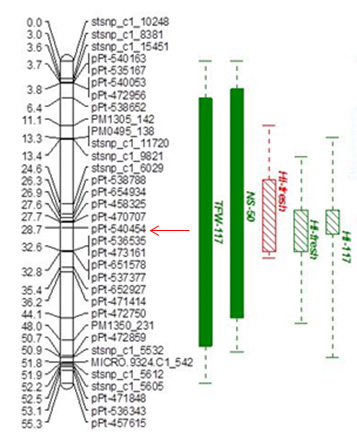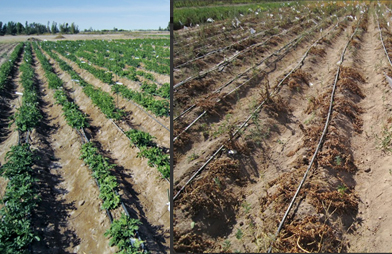Scientists Breed a Better Seed Trait by Trait
“We’re looking at the stress imposed on plants by climate change, but my primary focus at the moment is on drought,” Khan says – or rather, on helping to develop a sweetpotato that can get by on less water, or that can use photosynthesis more efficiently, or that can exhibit some as-yet unnamed trait Khan and his team identify – while at the same time maintaining quality and productivity.
Khan, a native of Kashmir, Pakistan who joined CIP in 2012, specializes in plant molecular biology and quantitative genetics, or the study of genes that guide a plant’s height, weight, and other measurable traits. As weather and climate patterns around the world change, new varieties of crops must be developed and improved to withstand these changes.
At the heart of Khan’s research is this simple fact: as the climate changes, “humans can move, while plants cannot.” For their survival and optimal productivity, plants must adapt instead by “tweaking” their biology.
“Plants have to activate responses to cope with the changes,” he adds. For example, “if a plant can develop longer roots to reach water normally out of its reach, then it will survive,” where a plant with a shorter reach will not.
In his work, Khan first considers which mechanisms must change in potato or sweetpotato plants if they are to better tolerate stress, such as the number of leaves the plant averages or the patterns in which the roots are distributed. Then, he examines the genetic markers controlling for these attributes.

Genetic markers linked to tuber fresh weight in a drought experiment
The ultimate goal is to successfully breed a new variety by “crossing” two plants with desirable traits that will result in progeny better able to withstand a newly emerging weather pattern in, say, a province in China that’s seeing its rainfall diminish, or a region of Tajikistan where the soil is more alkaline now than in decades past due to increased rainfall.
Khan himself doesn’t do the plant breeding. “Once I’ve identified [promising genetic] markers linked to the traits conferring greater drought tolerance, I give that information to the breeders, who use it to select [appropriate] plants as parents” and attempt a successful cross, both in the laboratory under controlled conditions and in the field.
Khan works closely with potato and sweetpotato breeders, including Dr. Wolfgang Gruneberg and Walter Amoros at CIP. He also works with National Agricultural Research Centers around the world to take the work of his research group to the next levels – to the experimental stage, and ultimately to farmers’ fields in the form of a new variety of potato or sweetpotato.
Under CIP’s global program, Khan is currently working with country specialists on projects in Africa, Central Asia, and China. Despite the distance between regions, work in Peru, for example, can be applicable to Uzbekistan if climate or weather patterns in the field are similar.
“We are constantly building our knowledge of sweetpotato and potato,” he says, describing the detailed protocols he develops for breeders and researchers in myriad countries. “Even if the information we gain is not directly applicable to a certain farmer, it all feeds into a system that benefits human society.”

Clones responding differently to drought stress. CIP Arequipa, Peru
